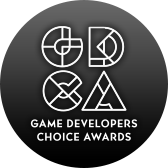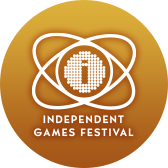"...We know that as soon as we ship, we will realize which features will really matter to the community, and no amount of planning in our office can truly predict that."
In advance of GDC Next, which runs in Los Angeles next week, GDC director of online community Patrick Miller talked to Microsoft Studios's Soren Hannibal about the inspiration and challenges behind making Project Spark, a free-to-play game-making-game due out for Xbox 360, Xbox One, and Windows.
Nielsen will be speaking about Project Spark in his GDC Next 10 talk in LA on Wednesday, Nov. 6th titled "Project Spark: Enabling and Inspiring the User to Make (Almost) Anything".
Patrick Miller: Were there other activities, toys, hobbies, emotions, etc. that you wanted to evoke with Project Spark?
Soren Hannibal: There are a lot of things that inspired us to build Project Spark. We all know that games are deeply engaging experiences; they're unlike any other media out there. Sites like YouTube and Twitter show how many people want to express themselves. We wanted to give people that medium -- the ultimate freedom to create anything you can think of, and let everyone see, critique, be inspired by, and improve upon your work.
Â
PM: I imagine it was hard to make Project Spark's learning curve gentle enough to be welcoming while still enabling complexity at the high end. How'd you do it?
SH: The first thing is to realize that one size does not fit all. Different users want to engage at different levels, so we made sure that there's not just one way to create. We started with focusing on an extremely flexible underlying technology, with the main components being world sculpting, object placement, and the scripting language. On top of that we built simplification on, layer after layer -- with the focus on allowing you to quickly rough in your world, but never stopping you from digging deeper if you wanted to.
You have multiple starting points -- you can make a number of choices and we build a full world for you, you can start by playing a world built by someone else, or you can start from an empty canvas. You can place each object individually, or you can user our brushes to populate the world as you paint the ground. You can apply pre-made behaviors or use your own. All in all, there are a lot of choices, and you don't need to spend months to have fun.
Â
PM: How'd you make Project Spark fun? And how the heck could you prototype, test, and iterate something like this?
SH: There are a number of things we've done here. For example, we try to recognize what you are interested in, and reward you for it -- whether you care mostly about modeling and painting the world, or you like to spend your time writing brains, we detect that.
Â
On a more tactical level, we try to give you a lot of instantly gratifying feedback -- something as simple as playing a sound and a particle effect when you place a prop, or adding inertia on the camera controls. These are the simple tricks that game developers have used forever to make games feel polished, but that you rarely see in "professional" game engine tools. We try to eliminate a number of tedious, repetitive operations -- you don't have to manually place hundreds of trees in your forest, but can just use a stroke of a brush, freeing you up to spend time on the things you actually care about polishing.
Â
Finally, I'd say that making games, at is core, is a lot of fun, but manual, error-prone processes and high iteration times can suck the fun out of anything. Therefore, we have done our best to improve iteration speeds. When editing a level, you can instantly test it, and you can instantly return to the editor whenever you see something wrong. You can make a change and see it in a second, without having to deal with the traditional steps of saving, exporting, processing, compiling and launching.
Â
PM: What was the first thing you saw someone do in Project Spark that surprised you?
SH: Our team has been doing little one-day game jams every three weeks for a long time now. There has been a ton of cool worlds built, but the first thing that I remember was from one of these game jams, really early on. Someone had made a 3D Marble Madness style game, which in itself was fun, but the impressive part was that the creator didn't use our built-in camera, he decided to rewrite the camera controls fully in our scripting language, and his camera worked better than what we had at the time. This is exactly what I hope to see from Project Spark -- people creating things that makes us think "How did he do that?".
Â
PM: What's your plan to sustain Project Spark? How do you grow and extend it? How do you nurture its community?
SH: For now, the focus has been on building a very robust and flexible core toolset, but we have a gigantic wish list of things we want to add on top of that. We are trying to stay agile, because we know that as soon as we ship, we will realize which features will really matter to the community, and no amount of planning in our office can truly predict that. Constant feedback from the community is much more important for Project Spark than it would be for a lot of other games, and we plan on shipping regular updates, both for new content and features.
Â
PM: Post-Minecraft, it seems like lots of people are interested in creating these sandbox-y user-generated content games because they're practically infinitely replayable. How do you retain players' interest? Is getting players to switch from one to the other somewhat akin to, say, having a dev switch IDEs or an artist switch from Max to Blender?
SH: In my opinion this is still a very sparse field, compared to many other game genres. I can say with confidence that it takes a lot more work to create a sandbox UGC game than a regular game. As a developer you lose a lot of control over the experience, and you have to support everything the user can imagine. Most UGC games put strict limits on the sandbox experience, whether it is game genre, world size or visuals, and any creation will show its parentage.
I think that dedicated creators will use the tools that will allow them to reach whatever goal they have, and the tools are complementary -- like Photoshop and Maya, not Max versus Maya. My hope is that more people find a way express their creativity, not just that people move from one program to another.
Online registration for GDC Next and the co-located ADC ends on Thursday, October 31st. For all the latest news on GDC Next, subscribe for updates via Facebook, Twitter, or RSS.
For more on the GDC Next 10 session series, read the GDC Next 10 listings, and previous interviews with Daniel Benmergui, Greg Johnson (HumaNature Studios), Nathan Vella (Capy Games) , and David Nottingham (Dynamighty).



